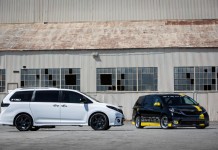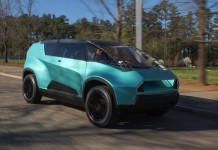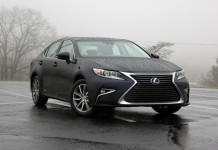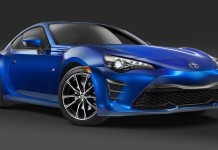A battle is brewing to save the only automotive plant still operating on the west coast of the United States after General Motors pulled out of a joint operating venture with Toyota.
The Japanese automaker has not yet announced whether it will continue to run the Fremont, California plant or phase it out and shift production of its popular Corolla sedan and Tacoma pickup truck elsewhere.
But it has warned that closing the plant is a distinct possibility as it struggles to cut costs after falling into the red for the first time in nearly 70 years, with a whopping 436.9 billion yen (4.6 billion dollars) net loss for the year ending in March.
“We are carefully evaluating our options with respect to the NUMMI joint venture as a result of General Motors’ actions,” Toyota spokesman Mike Michels said.
“That could, but not necessarily would, involve closing the plant. But at this time there has been no determination.”
Toyota has never been responsible for closing an assembly plant anywhere in the world, so this could be a first for the world’s largest automaker.
The decision could also have significant economic and political repercussions on both sides of the Pacific, particularly if Toyota decides to import vehicles to the United States, rather than build them at US facilities.
Complicating matters is the fact that New United Motors Manufacturing Inc. is the only unionized Toyota plant in the United States and is located in the home state of powerful House Speaker Nancy Pelosi.
“Frankly, I would be surprised if they closed (NUMMI) because they need the capacity,” said Alan Baum, an analyst with The Planning Edge.
While operating the plant without sharing expenses with GM will be costly, Baum said Toyota would be hard pressed to find another place to build the 360,000 vehicles NUMMI produces.
“They could always import fewer Corollas to make up for the lost production of (GM’s) Pontiac Vibe,” he told AFP.
However, Toyota is under substantial pressure to cut costs in the wake of a sharp drop in sales and the unionized plant has higher operating costs than their non-unionized facilities in Texas, New Jersey and Kentucky.
“Toyota has a lot of trouble right now,” said Erich Merkle, president of forecasting firm Autoconomy.
“They have several issues they’re trying to sort.”
Toyota’s recent foray into large trucks came just in time for the spike in fuel prices and a crippling recession, and management is divided over whether it should continue to offer a broad product portfolio in North America or instead return to its fuel-efficient roots, Merkle said.
There is also pressure inside the company to get out from under NUMMI’s labor contract with the United Auto Workers (UAW), he added.
The union confirmed that it is in talks with Toyota about the future of the plant, but would not comment on whether the Japanese automaker would be granted the same kinds of concessions the union has given to the Detroit Three.
“The parties have a 25-year history of working together in an atmosphere of mutual trust and respect,” the UAW said in a statement.
“Members of UAW Local 2244, local union leadership and the International Union, UAW are making every effort to continue a positive relationship.”
Toyota entered the joint venture in 1984 as an experiment to see if American workers could build cars according to their standards.
GM wanted to learn about Toyota’s more efficient manufacturing methods and was able to save the flagging plant from closure by bringing Toyota in to operate the factory.
Since then, Toyota has pursued a policy of building the majority of the vehicles it sells in the United States in North America and has launched several advertising campaigns highlighting its contributions to the US economy.
GM announced on June 29 that it was pulling out of the 50-50 venture as it restructured its operations under bankruptcy protection and would cease producing the Pontiac Vibe there in August.
The 5.3 million square foot facility near San Francisco employs 5,440 people and produces approximately 250,000 cars and 170,000 trucks, according to the plant’s website.
All but 60,000 are Toyota vehicles.








